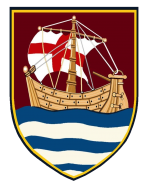Pre 1850s
We respectfully acknowledge that our church stands on traditional lands of the original custodians of Brighton, the Kaurna people.
Early settlers arrived in this seaside settlement during the 1840’s and by 1851 a small community prepared for future development, which included an Episcopalian church.
1853 – 1899
Our pioneers had a vision of a grand church with cemetery, school and rectory – just like at home in England. These years were very challenging. However, by January 1854 the governor’s wife, Lady Fox Young had laid the foundation stone for the church which was completed and dedicated by Bishop Short in 1855, who had already consecrated part of the cemetery donated by William Voules Brown.
The name of St Jude was chosen because he, like these pioneers, travelled by sea.
In the following years many worked hard to raise funds for extensions and fittings, so by 1894 the church was an impressive landmark in the rapidly growing community of Brighton.
During this period services were conducted by clergy from the neighbouring churches of either Glenelg or St Mary’s South Road and local Lay Readers. Most did not stay long but in the late 1880s the Rev’d Samuel French and his Assistant Curate, Alfred Sells, from Glenelg did much to help St Jude’s to grow as a community.
1900 – 1953
Finally Brighton was made a Mission District in 1900 and soon after in 1909 a Parish. With incumbent clergy and a rapidly growing congregation St Jude’s thrived. A hall, French Memorial Hall, was completed in 1904. A rectory was completed by 1914. By 1922 St Jude’s had a school run by the sisters Dorothy and Winifred Fleming which was called the Hopetown School. This ran until 1962.
In 1932 Grundy Hall was built which eventually became home to the St Jude’s Players in 1949 which are still performing.
The vision of the pioneers was clearly evident.
1954 – 1964
On 1 March 1954 an earthquake hit Adelaide and severely damaged St Jude’s Church. Repairs were made but as the congregation was undergoing rapid growth a much larger church was needed. Bishop Thomas Reed conducted the first dedication service in the unusually designed church, which included both old and new, on 24 May 1964.
Some of the wonderful, Voiter Marek, 1960’s copper art works and ecclesiastical fundamentals for the mid-century St Jude’s building are catalogued here.
1965 – 2019
The modern history of St Jude’s reveals the church as the people of St Jude’s.
St Jude’s has been fortunate to have clergy of lengthy tenures and great commitment and vision. The Rev’d Colin Carew Chittleborough led a direction of worship which is still maintained with an emphasis on parish communion and education.
Music at St Jude’s has always been very strong with choirs, organ, small orchestra and performance. The Sunday School was very strong in the 1950s and 60s with a peak of 350 students and 41 leaders in 1965. The Mother’s Union has maintained strong membership and caring support for parishioners since its foundation in 1896. Groups such as Craft/Art, Social, Sports etc. have all thrived at various times. The craft group has contributed much to the church. Education programs have always been a regular feature of St Jude’s such as the Lenten Suppers with talks and Winter Lectures
History at St Jude’s
A source of information for this page is from a book written by Lochee Andison called ‘The Wake of St Jude 1854 – 1985’. Copies are still available from the parish office.

Another source has been the stories of people of St Jude’s. These have been collected as part of the ‘Who Do You Think You Are St Jude’s?’ history project. These stories are displayed in the church and continue to grow.
Each year St Jude’s history is presented as part of the annual History Festival in May. In our efforts as a mission focused church we aim to be relevant to the local community and we work with the Brighton Historical Society and the City of Holdfast Bay History Centre.
“St Jude’s is… a place of peace and refuge”
– J. Gregory




